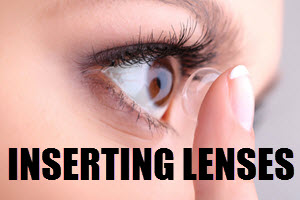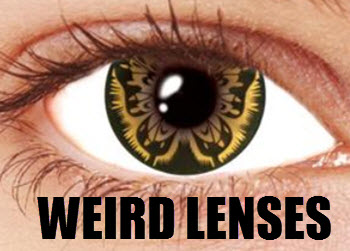The Popularity of Decorative Lenses
Decorative lenses, also referred to as cosmetic or colored contact lenses, have burgeoned in popularity over the past few years. These lenses, unlike their corrective counterparts, are primarily used for aesthetic enhancement, offering individuals the chance to transform their eye color and design to match their fashion preferences. The appeal of a cosmetic transformation through such lenses cannot be understated, yet their effect on vision clarity necessitates close scrutiny. While they offer a striking eye makeover, it is crucial to comprehensively understand their impact on the clarity and safety of vision.
Vision Clarity and Decorative Lenses
The potential implications of wearing decorative lenses on vision clarity are multifaceted. Even though their primary function is not to correct vision but to enhance personal appearance, decorative lenses might not always be produced to match the high standards associated with prescription lenses. Consequently, several factors can contribute to potential vision clarity issues, including quality and fit, lens material, and lens design.
Quality and Fit
The importance of quality and fit cannot be overstated when it comes to the clarity of vision with decorative lenses. Unlike prescription lenses, which are crafted to address specific visual impairments and tailored precisely to fit an individual’s eyes, cosmetic contact lenses often fall short. The lack of customization in decorative lenses can lead to discomfort and a suboptimal fit. Poor-quality lenses could be uncomfortable to wear and result in blurred vision, and in severe cases, may even cause harm to the eye. Hence, acquiring lenses from well-established and reputable sources is paramount in ensuring safety and clear vision.
Quality pertains to the materials and craftsmanship of the lenses. High-quality lenses are more likely to provide a smooth surface, contribute to clearer vision, and protect the eyes from potential irritants and infections. Fit, on the other hand, pertains to how well the lenses conform to the wearer’s eyeball shape. Ill-fitting lenses can shift during blinking or movement, thereby interfering with vision and increasing the risk of eye damage.
Lens Material and Design
The materials used in the fabrication of decorative lenses are crucial in determining the lenses’ impact on vision clarity and eye health. Materials that do not allow sufficient oxygen transmission to the eye can lead to dryness and irritation. Eyes, by nature, need a continuous supply of oxygen to remain comfortable and healthy, and lenses that obstruct this supply can compromise eye health.
Oxygen permeability is a key factor; more permeable materials typically facilitate greater oxygen flow to the eyes, reducing discomfort and maintaining better eye health. Furthermore, the design of the lenses can also play a significant role in influencing vision. Lenses with intricate designs may not be perfectly aligned on the eye, leading to potential distortions in the wearer’s vision. Moreover, improper pigmentation or misaligned designs may encroach upon the pupil’s area, consequently obstructing vision.
As a result, both the oxygen permeability of the lens material and the intricacy of lens design require careful consideration to ensure clarity and comfort, emphasizing the need for high-quality lenses that conform to stringent safety standards.
Regulations and Recommendations
The increasing popularity of decorative lenses has led to the establishment of various regulations aimed at safeguarding eye health. In numerous countries around the globe, there are stringent guidelines governing the sale and use of decorative lenses due to the potential risks they carry.
In the United States, for example, decorative lenses are categorized as medical devices. As a result, they require a prescription from a qualified eye care professional, even if they serve no corrective purpose for vision. This regulatory framework is intended to ensure consumers receive the proper guidance necessary to avoid complications that could arise from improper use or poor-quality products.
The regulation of decorative lenses is not merely about acquiring a prescription. It is also about having qualified eye care professionals oversee fittings to ensure that the lenses meet individual needs. Eye care professionals, including optometrists and ophthalmologists, can offer expert advice on the proper care and maintenance of these lenses, alongside determining whether an individual’s eye health is compatible with specific types of decorative lenses.
Eye Care Professional Resource provides comprehensive information on the safe use of contact lenses, offering a valuable resource for those considering the use of decorative lenses.
Conclusion
Ultimately, while decorative lenses represent an exciting avenue for personal expression and aesthetic enhancement, the implications on vision clarity and eye health remain significant. Understanding the importance of proper fit and high-quality materials is crucial in selecting safe decorative lenses. Just as important is seeking professional guidance, which provides not only fitting but also advice on care and potential complications.
By focusing on these critical factors—quality, fit, material, design, and professional regulation—individuals can enjoy the aesthetic benefits of decorative lenses without compromising their vision. In doing so, they maintain a commitment to safeguarding eye health, combining fashion-forward choices with responsible eye care. This balance ensures that while one’s appearance might change, the foundational health of their eyes remains unwaveringly protected.



 Cosmetic contact lenses
Cosmetic contact lenses